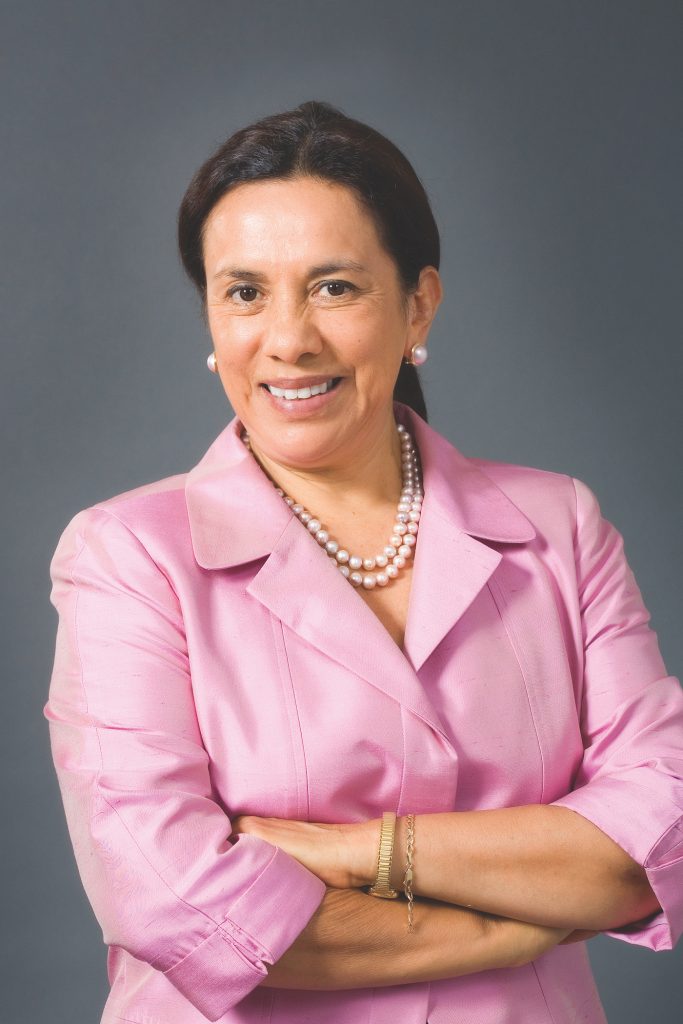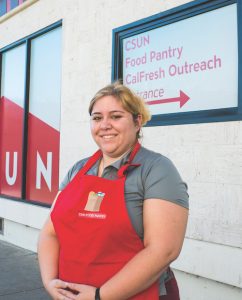Opening the Door to a New Kind of Philanthropy
As told to Daniel Heimpel

Since 2004, Antonia Hernández has led the California Community Foundation (CCF). Over those nearly two decades Hernández has grown the endowment to $2.6 billion, $800 million being discretionary funds that she and her increasingly diverse staff have used to combat some of the most endemic social issues facing our region.
For Hernández, CCF and its vast resources have allowed her to continue the expression of her life’s work: helping people. Whether working for the Senate Judiciary Committee as an attorney representing victims of domestic abuse, or as president and general counsel of the Mexican American Legal Defense and Educational Fund (MALDEF) fighting for immigrant rights, she has always focused on justice.
One of her proudest achievements at CCF is changing the institution to represent Los Angeles more deeply, the place she calls her “perfectly imperfect paradise.” To do so has required changing not only how the foundation makes grants and investment decisions, but also the people who work there.
For many years, “I was the first Hispanic,” she says. “It got old and lonely. What I want to do is have a lot of other Latinos, people of color in philanthropy, because I think philanthropy will be better for it.
“I’m not the special one. I just opened the door. Who else is coming in?”
In her remarks below, Hernández speaks to the urgent needs of Los Angeles, and charts a path for a new kind of philanthropy – one that looks more like the people it serves and is ready to change how it works to achieve more social good.
You have led the California Community Foundation for nearly two decades now. What about the job has made you want to stay?
I’ve loved every job I’ve had because I see every job as a vehicle, a vehicle for social change, a vehicle for improving the quality of life.
When I worked at legal aid it was one client at a time. When I worked in the Senate, it was legislation to really improve the lives of refugees, immigrants, and similarly at MALDEF. The tools that I used for social change were litigation, advocacy, education. At CCF, the tool is money. To me it’s the same thing. You’re just using different tools for the same goals.
What are you most proud of in the time you have spent leading the Foundation?
What I’m most proud of is that I have changed this institution to see itself as of L.A. for L.A. by L.A.
I call L.A. my perfectly imperfect paradise. We are the world, every community, every language, every ethnic group is here in Southern California. We’re a laboratory of bringing together people from different parts of the world and creating an environment where with all our problems we can coexist.
I am proud that we have changed the institution of CCF to be an activist community foundation. We know that the community is the foundation of who we are.
Philanthropy is still predominantly white. And so, part of CCF’s mission is to train people of color here at CCF, and then for them to go and populate other foundations, not just locally, but in California, throughout the country. So, we can diversify philanthropy, which I think is really important.
I hire extraordinarily bright, talented people because the perception is that intellect is still a white issue. But the Lord spread intellect to all parts of the world, what that intellect needs is opportunity.
Since pledging to commit $1 billion in grants to Los Angeles County nonprofits in 2015, the California Community Foundation has already eclipsed $800 million. Why is that investment so important?
We are unique in our ability to do stuff. Yes, our donor funds are larger, but not by much. We have a substantial amount of funds that are discretionary to our fields of interest. And we have worked very hard to increase our discretionary funds.
And that’s what has given us this influence in L.A., the fact that we have discretionary money to infuse into L.A. County and then bring along donors. Because it’s only when you align all those that you maximize your impact.
Our strategic plan runs through 2025. So, we’re going to exceed that $1 billion goal.
The Foundation has prioritized getting children and families enrolled in two federal programs: the Supplemental Nutrition Assistance Program (SNAP) and the Earned Income Child Tax Credit. Why is this important, and how does it speak to philanthropy’s role in working with the government?
Philanthropy is delusional if it thinks it is going to address issues of poverty with the totality of the funds that philanthropy has. We both know that the vast majority of money and resources that go to alleviate poverty come from the public sector.
And so, if you don’t partner and leverage public sector resources, you are just playing at the edges.
The Child Tax Credit is a perfect example. Right now, we have a temporary earned income tax credit of $3,600 for every child under six and $3,000 for a child over six. If a poor person has three children, they can technically receive over $12,000. This is in addition to a 25% increase in the food stamp program [SNAP].
It is possible that this is the most significant thing that has happened for us to alleviate poverty in our lifetimes, and a chance to really touch and decrease poverty. But if we don’t sign people up, it’s not just the family that’s gonna lose. It’s the grocery store, it’s the Ross, it’s the Marshalls, it’s the Targets.
So, it’s our job to make sure families sign up, and CCF has already devoted $1 million to do that. That’s how we leverage. Collaborating with government is the only way we’re going to make a major impact on all the issues affecting poverty, and any philanthropy, any foundation that doesn’t see that is fooling themselves.
Affordable housing and homelessness are arguably two of the most pressing issues we all face in Los Angeles. Tell me how the Foundation is using not only its grantmaking, but the investments made from its corpus to help.
My approach is threefold.
First of all, it’s grantmaking to the nonprofit developers. We’re one of the biggest grant-makers in that locally.
Secondly, it’s program-related investments, where we make loans to nonprofit developments.
And now this mission investing, where we have $10 million to invest in private sector endeavors to increase the stock of homes.
We also engage our donors. For instance, we went to our donors and said, we’re creating a fund that you should invest in for dealing with homelessness. And we created a fund of $5 million. We told them, you’re not going to get huge returns, but CCF guarantees the loan. You’ll never lose the value of your investment. The $5 million came in and we deployed those funds. Now we’re thinking of starting another fund. So, it’s not just our resources.
You’ve got to look at it holistically in order to leverage the resources that we have to make major impact.
The Foundation has a robust donor advised fund practice. Why do you believe the Foundation is a good partner for individuals or families looking to engage on philanthropy?
If the community foundation is in fact a community foundation, the value added is our knowledge of the community, our knowledge of the needs of that community.
We understand that donors want to give, but they want to have impact. The action is at the community foundation level. This is where change is happening. And so, I would urge folks, whether it’s Santa Barbara, San Luis Obispo, San Diego, or wherever, I would urge donors to connect with your community foundation, because that’s where you’re going to see the difference and the impact of your investment.
